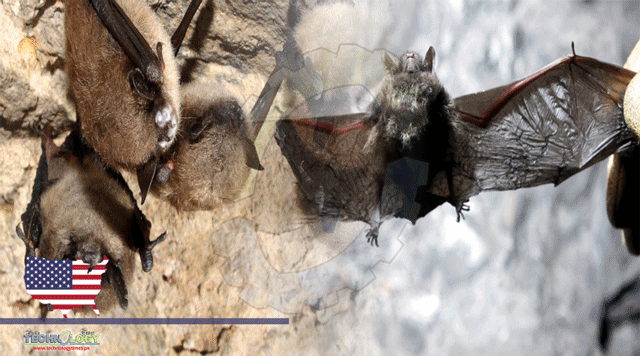Louisiana is the 41st state where the fungus has been found; the disease — known as white-nose syndrome — has been confirmed in 38 of them.

A fungus that has killed millions of bats nationwide has been found in Louisiana, but no bats in the state have been sickened by it so far.
The disease it causes is called white-nose syndrome because bats develop fuzzy white patches of fungus on their noses, wings and other hairless areas. The disease also dehydrates bats and wakes them from winter hibernation, using energy that they can’t replace because the insects they eat aren’t flying around. The syndrome has killed so many northern long-eared bats that federal officials recently proposed listing them as endangered.
Louisiana is the 41st state where the fungus has been found; the disease has been confirmed in 38 of them, Marilyn Kitchell, the U.S. Fish and Wildlife Service’s white-nose syndrome spokesperson, said in an interview Tuesday.
“The news about the fungus … being found in Louisiana is not surprising but is discouraging,” Winifred F. Frick, chief scientist at Bat Conservation International, wrote in an email. “This is especially bad news for species like the tri-colored bat that have suffered major population declines from this disease throughout the southeast.”
Bats hunt down insects and pollinate some plants for what’s estimated to be a $3 billion annual boost to U.S. agriculture.
In Louisiana, the fungus was identified on Brazilian free-tailed bats, a species that can be infected without developing the disease. The species is among 12 found in Louisiana. Three other species found in the state also can carry the fungus without becoming ill and three, including tri-colored bats, are susceptible to the syndrome, according to the Louisiana Department of Wildlife and Fisheries.
Nationwide, the syndrome has been confirmed in 12 of the 47 bat species found in North America, according to the White-Nose Syndrome Response Team website. The fungus called Pseudogymnoascus destructans, or Pd, has been found on another eight species where the disease has not shown up, Kitchell said.
It could take years for white-nose syndrome to show up in Louisiana, if it ever does, Nikki Anderson, a biologist with the Louisiana Department of Wildlife and Fisheries, said last week.
This news was originally published by NBC News.